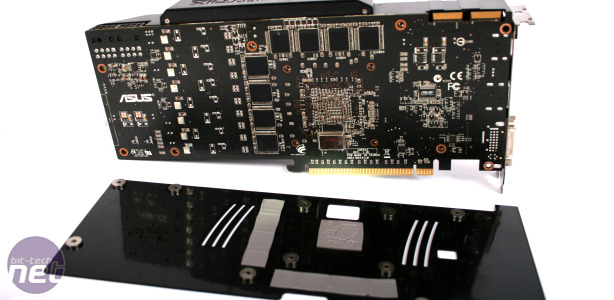Performance Analysis
The Asus Matrix HD 5870 returned pretty much what we expected. In Dirt 2, for example, the Matrix sat between the stock-speed HD 5870 and the XFX HD 5870 Black Edition and it more aggressive overclock. The Matrix may have only been 1-2fps slower than than XFX, but as its also costs £20 more, it's clearly a card that requires a bit of DIY overclocking to get the most from. All three HD 5870 cards trailed the GeForce GTX 480 in this game too, though unlike the GTX 480 none of the Radeons deafened us nor increased the room temperature significantly.The GTX 480 didn't enjoy the same dominance in STALKER though, where ATI cards rule. Again, the Matrix failed to pull out an appreciable lead over a stock-clocked HD 5870; the two cards returned identical frame rates of a 35fps minimum and a 45fps average at 2,560 x 1,600, for example. Clearly having 2GB of graphics memory does little to enhance performance in when wandering the radioactive wastes of The Zone, a slightly surprising result given STALKER's hunger for graphics horsepower.
The tale of mediocrity continued in Crysis. At 1,680 x 1,050 with 0x AA the Matrix gave almost identical results to a stock HD 5870. The XFX, with its overclocked memory, beat both cards by 1-2fps giving it a little more headroom, though all three HD 5870s could play the game smoothly at these settings. The Matrix did nose ahead of the stock HD 5870 at 1,680 x 1,050 when we enabled 4x AA, returning a minimum of 20fps and an average of 37fps compared to the 19fps and 36fps the stock card displayed.
Things started swinging towards the Matrix when we upped the resolution in Crysis however, and at 1,920 x 1,200 with 4x AA it drew level with the XFX Black Edition, despite its lower frequencies.

It's good to see that the back of the GPU gets some cooling, as well as the extra memory installed on the rear; the backplate can get very hot though. Click to enlarge
The Matrix was slightly faster than the XFX in Bad Company 2 at most of our test resolutions and AA settings, but only by 1-2fps at most. At 1,920 x 1,200 with no AA the Matrix managed a minim of 51fps to the XFX's minimum of 49fps. However, when we added 4x AA, the XFX was 1fps faster; we saw the same pattern at 2,560 x 1,600. Both pre-overclocked HD 5870 cards could comfortable run the game at playable frame rates below 2,560 x 1,600 with 4x AA, but both were eclipsed by the GTX 480, which produced a storming 29fps minimum at these settings.
Power consumption and Thermals
The Matrix drew the same amount of power from the wall as the XFX when both cards were idle, and 18W more when both cards were under load. The custom cooler of the Matrix performed well; though the GPU ran a little warmer than the XFX's at idle it was a lot more quiet. At load the fan span up but remained more pleasant than the whiny fan of the XFX. The Matrix's cooler also cooled the GPU to a delta T of 48oC; 3oC cooler than the stock cooler managed with a stock-speed GPU.
MSI MPG Velox 100R Chassis Review
October 14 2021 | 15:04











Want to comment? Please log in.